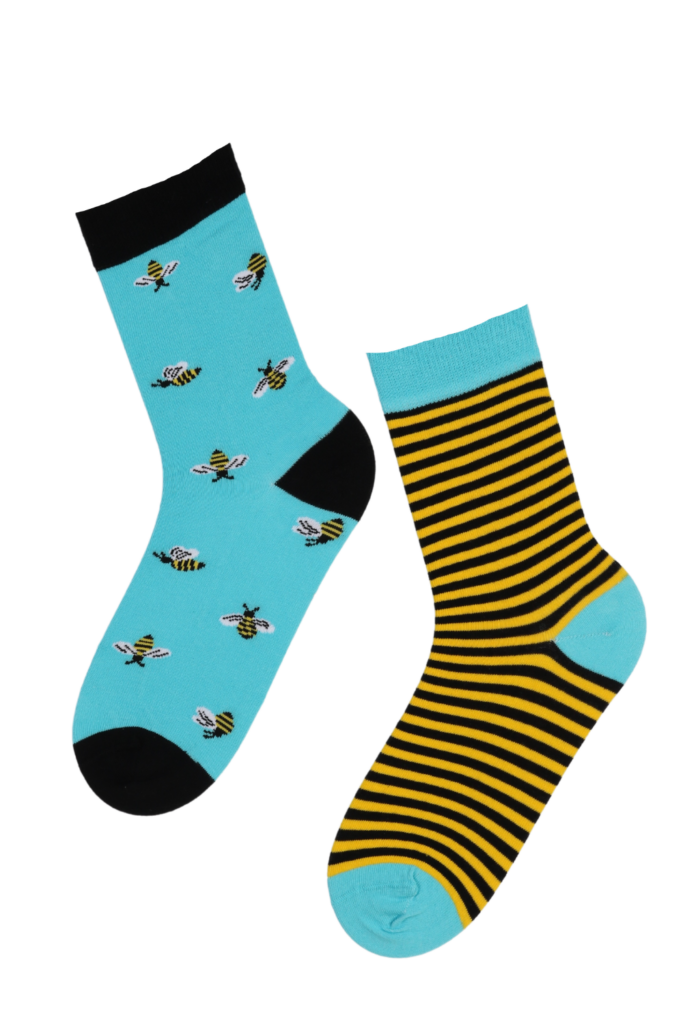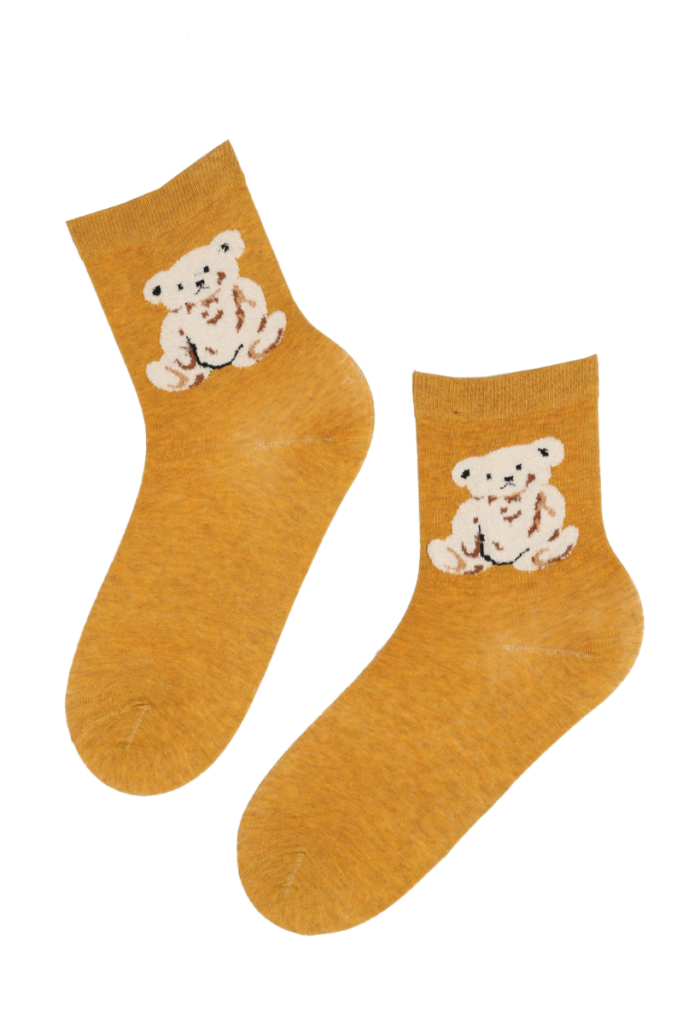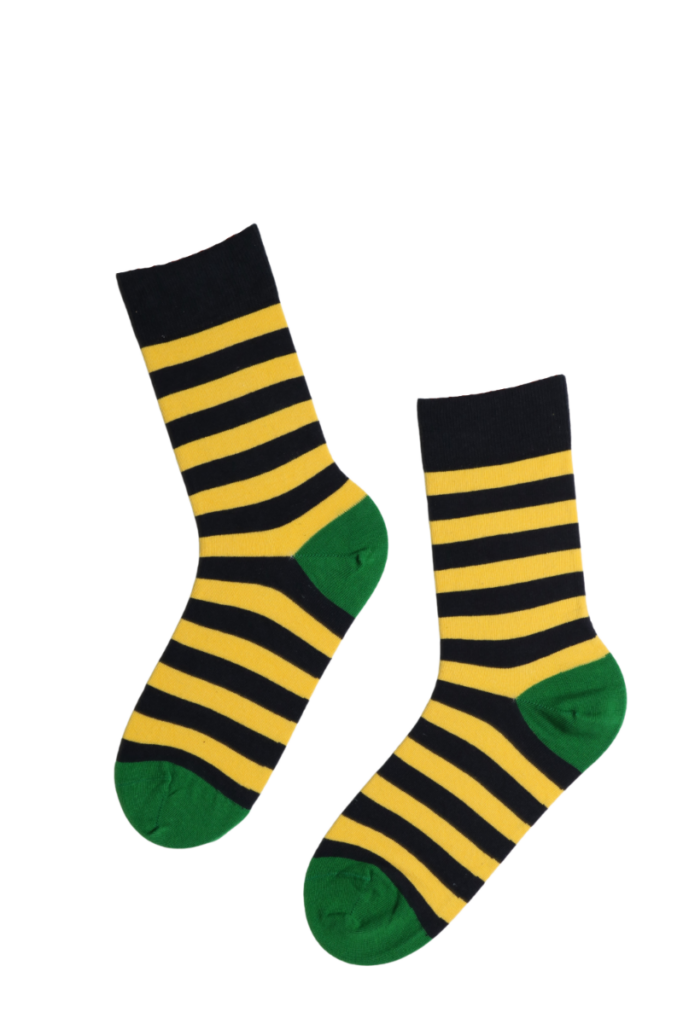- How are socks born nowadays?
- What happens in the sock factory?
- What are socks and tights made of?
- The most common materials
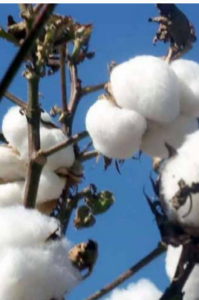
How are socks born nowadays?
Have you ever thought about how socks are made? Let us tell you all about it! First of all, everything starts with the soft fluffy cotton bolls growing on the cotton bush (Gossypium). The bolls are, in fact, protective cases containing cellulose fibers that form around cotton seeds. Surprisingly, each seed can have up to 700 fibers covering it, and these are the ones used commercially.
These cotton bushes grow in tropical and subtropical regions. There are nearly 40 different varieties in total, with four of them favored by producers due to their longer and better-quality fibers. Most of the world’s cotton is grown in the US, Uzbekistan, China, and India, followed by Brazil, Pakistan, and Turkey.
After the cotton is picked, its fiber is spun into a thread that is used for producing light and breathable textiles. Although the thread is initially white, it is dyed with different colours at the factory.
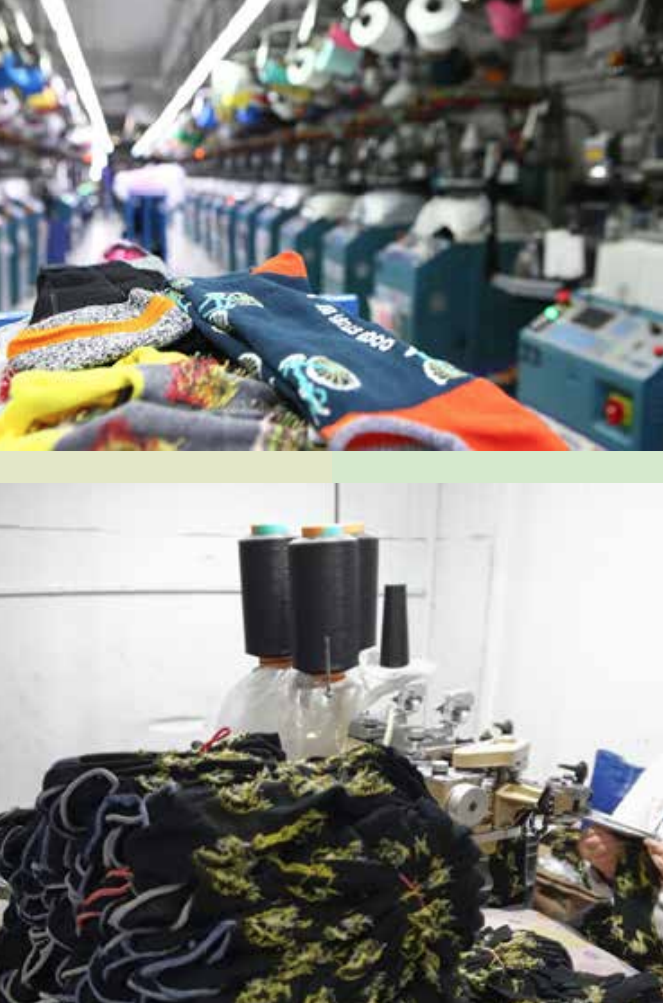
What happens in the sock factory?
Firstly, the designers have to think quite a bit and create the designs for the socks. Then, after the creative minutes, suitable threads are chosen and inserted into a sock weaving machine. This time-consuming process requires a lot of concentration because each design element must be set up loop by loop in the machine. Thus, these weaving machines operate 24/7, whereas the sock factory staff work in shifts.
As the socks are taken from the weaving machine, both of its ends are open. Thus now, It is time that each of the sock’s toe is sewn together. Sewn socks are then sent into a washing machine where they are rinsed 3–10 times depending on the client’s instructions and the socks’ design. This process helps to extract excess dye from the thread. Meaning the more times the socks are rinsed, the higher their quality.
Then the washed socks are ironed on special flat metal plates shaped like feet. Ten seconds on such hot plates gives them their correct and final shape.
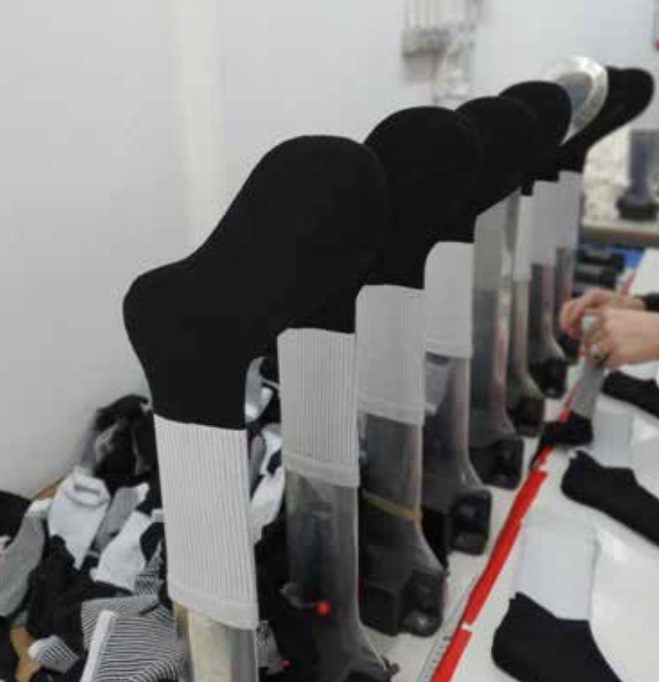
How do your socks get to the shops?
After ironing, the socks are divided into pairs by hand, attached to each other, provided with a label and a sticker. The paired socks are then packed into boxes as the final step of the manufacturing process. Then the socks travel to Sokisahtel’s main warehouse and from then onwards to shops where shop assistants display them on shelves and mannequin feet. Now the socks are ready and waiting for you!
Now you know that Sokisahtel’s products are more than just cosy and colourful footwear – they are the result of 10–15 pairs of hands’ loving work.
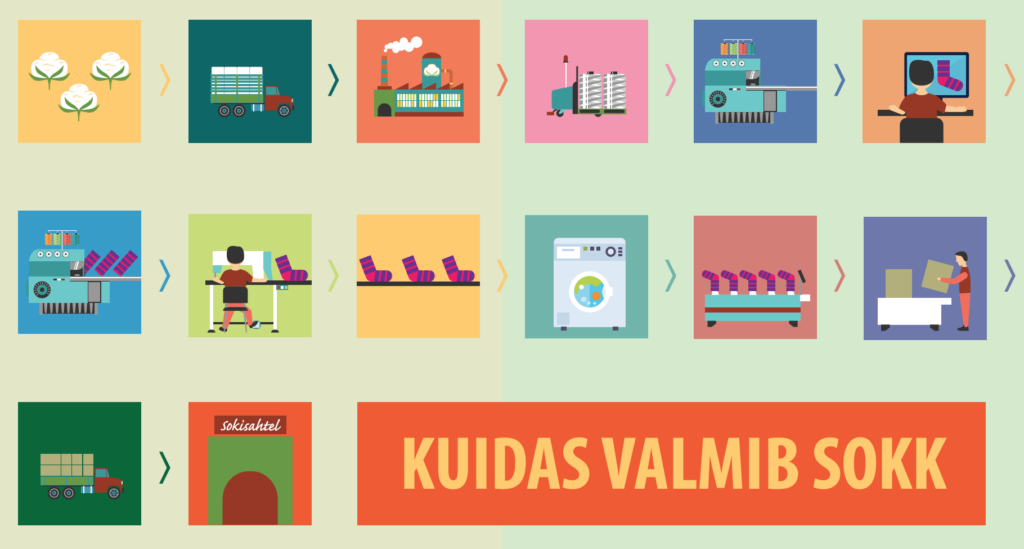
What are socks and tights made of?
The most common materials

Bamboo fabric (viscose)
Bamboo fabric is breathable, durable, soft, antibacterial, and has the ability to regulate body temperature. Meaning, in summer it cools you down, and in winter it warms you up! The bamboo fabric does not require any pesticides or fertilisers to grow, and it produces 35% more oxygen than any other plant varieties. Bamboo can be processed both mechanically and chemically. The extensive mechanical processing results in a soft fabric similar to linen. The other option is chemical processing, which requires a considerable amount of additives and therefore results in a less natural bamboo viscose.
Cotton
Cotton is a soft fibrous material that comes from cotton bushes growing in tropical and subtropical areas. Cotton fibers are spun into yarn or thread used to produce soft and breathable textiles. Cotton is the most common natural material used in today’s clothing industry.
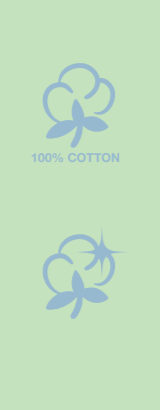
Organic cotton
Organic cotton is cotton whose raw material comes
from bushes grown without pesticides and fertilizers.
Such cotton farming is practised in India, Turkey, China,
and the US. The production of organic cotton promotes
and strengthens biodiversity and helps maintain the
health of both soil and farmers.
Mercerised cotton
Mercerised cotton is shinier, stronger, and easier to
dye than regular cotton yarn. This material is the result
of a complicated chemical processing of cotton. As a result, such
cotton does not shrink or lose shape as easily and is also
more resistant to pilling.

Sustainable material
Recycled thread
Recycled thread is a material made of textile industry leftovers. Depending on its intended use, polyester, cotton, acrylic or viscose is added, along with some chemicals to achieve fine fibers. Special open-end spinning machines developed especially for this purpose are used to make yarn from recycled thread. Recycled fibre is a sustainable alternative that can be used for producing upholstery, carpets, velvet, woven fabrics, socks, blankets, cleaning cloths, and other products.

New technologies
Nanofiber
Nanofiber tights are made of nylon fiber produced using the electroforming method. This is a great innovation for people who wear tights – as nanofiber tights are soft, light and durable, and look like a second skin. Furthermore, since the tights are ladder-resistant, they are also highly valued among dancers.
3D fabric
3D tights are made using an innovative 3D (3-dimensional) fabric that is woven horizontally and vertically at the same time. The resulting product has a very uniform finish, is remarkably stretchy, smooth, and silky soft. 3D tights are not as opaque as fabric leggings, but their appearance and possible uses are very similar. Footless 3D tights are very popular and trendy as well.
